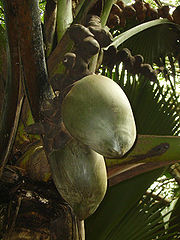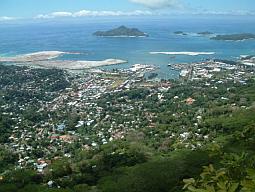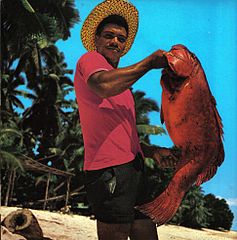
Exploring the history and experiences of mixed heritage persons and inter-racial relationships across the world

Exploring the history and experiences of mixed heritage persons and inter-racial relationships across the world
 Some people would swear that the Seychelles archipelago with its 115 islands spread over 451 square kilometres (174 sq mi) of the Indian Ocean is paradise on earth. Certainly, its people, a potpourri of peoples from all corners of the globe, greatly assisted by its relatively central position in this ocean, contribute that the sense of paradise.
Some people would swear that the Seychelles archipelago with its 115 islands spread over 451 square kilometres (174 sq mi) of the Indian Ocean is paradise on earth. Certainly, its people, a potpourri of peoples from all corners of the globe, greatly assisted by its relatively central position in this ocean, contribute that the sense of paradise.
Nearly 1,500 kilometres east of Africa, Seychelles’ central position in such an important oceanic trade route attracted sea faring people for centuries and so it is bit of a surprise that none of the islands were inhabited earlier. Evidence of Austronesian and later Maldivian and Arab visits have been found with one of the earliest being remains from the 12th century on Silhouette Island. In 1502, Vasco da Gama, sighted the Amirantes and named them after himself (islands of the Admiral). However evidence of earlier knowledge is available in the shape of an Arabian manuscript dated AD 851 and the fact that Arabs were trading the highly valued ‘Coco de Mer’ (Sea Coconuts) nuts, found only in Seychelles which have been known to be washed ashore as far away as Indonesia.
 It is possible that they may have been a short lived period of settlement as the Austronesian peoples migrated across the Indian Ocean towards Madagascar to the south west of the islands.
It is possible that they may have been a short lived period of settlement as the Austronesian peoples migrated across the Indian Ocean towards Madagascar to the south west of the islands.
Semi –permanent settlements of pirates may also have existed after the pirates moved from the Caribbean to set up bases in Madagascar for the richer pickings in and around the Red Sea and Persian Gulf. The French finally claimed some of the islands in 1756 when Captain Nicholas Morphey laid a Stone of Possession.
Having no indigenous population, the French imported slaves with the resultant inter-mixing that occurred in the early days of many of the colonies. Inter-racial mixing was frowned upon by the French at the time but it continued for some time. It is believed that the French based Creole language spoken in the Seychelles started to develop.
During the French Revolution (1789–1799), the settlers decided to govern themselves in 1790 but they continued to act as a safe place for French corsairs (pirates with official authority to attack enemy shipping). This did not go un-noticed and finally the British arrived with an ultimatum. The settlers surrendered, but not before negotiating themselves a ‘good deal’. The result was that the British made no effort to control the islands which retained its French characteristics. The ‘good deal’ was reinforced some seven times whenever British ships visited.
The result of the British indifference allowed a French European elite, the Gran'bla ("big whites"), to flourish on the Islands, dominating both commerce and politics. They remain a distinct and the second largest ethnic group on the islands thought there are probably many mixed race descendants of illegitimate offspring
The British took full control of the Islands in 1810 after the surrender of Mauritius. One of the grievances of the French settlers in the following years was the British’s intention to banish slavery. In 1835, it was banned and since many of the plantations’ soils were now exhausted, some settlers left with their slaves. The slaves that remained behind were joined in serving their apprenticeship by the flow of slaves freed from slave ships of all flags captured by the British Navy in the Southern Indian Ocean. Over 15 years, some 2,500 ‘freed’ slaves joined those on the islands. After apprenticeships, many of the slaves squatted on the properties they had worked as slaves.
 Indentured labour from India was the British answer to the abolishment of slavery. All over the Indian Ocean, thousands of Indians, mainly Hindus from North India and Tamil and Telugus from South India, came to work and the Seychelles was no exception. The levels in the Seychelles however did not come close to those in its southern neighbouring islands of Mauritius and Reunion. Like their counterparts elsewhere in the region, many of the descendants of these immigrants ended up in the commercial sector. Inter-racial marriage with the descendants of slaves was limited and so they also do form a small (6%), distinct community in the islands.
Indentured labour from India was the British answer to the abolishment of slavery. All over the Indian Ocean, thousands of Indians, mainly Hindus from North India and Tamil and Telugus from South India, came to work and the Seychelles was no exception. The levels in the Seychelles however did not come close to those in its southern neighbouring islands of Mauritius and Reunion. Like their counterparts elsewhere in the region, many of the descendants of these immigrants ended up in the commercial sector. Inter-racial marriage with the descendants of slaves was limited and so they also do form a small (6%), distinct community in the islands.
Chinese immigrants started arriving from Mauritius in 1886, many of whom had originated from the Chinese mainland and had been apprenticed in Mauritius. Their numbers have always been small, numbering around 1,000 individuals in 1999, and a few ended up marrying local women of mixed or African descent.
In 1903 became a separate British Crown Colony from Mauritius but the French language and culture remained dominant. The landowners continued to dominate politics and commerce to the point when after the 2nd World War, the right to vote was only granted to literate property owners; just 2,000 in a population of 36,000. It was no surprise that the 1948 Legislative Council came from that same group. Independence was granted in 1976 as a republic within the Commonwealth which was followed in 1977 by a socialist coup d'état.
 It was estimated that the population of the Seychelles was about 89,000 in July 2011, the smallest population in Africa. Most of these people live on the 3 main islands of Mahé, Praslin and La Digue and over 70% are mixed – mainly mixed African descendants of slaves. However, the Seychellois use the word Creole (Kreol ) to refer to those native to the country of whichever ancestry. Through language and culture, the distinct communities are fused into a single Seychellois identity.
It was estimated that the population of the Seychelles was about 89,000 in July 2011, the smallest population in Africa. Most of these people live on the 3 main islands of Mahé, Praslin and La Digue and over 70% are mixed – mainly mixed African descendants of slaves. However, the Seychellois use the word Creole (Kreol ) to refer to those native to the country of whichever ancestry. Through language and culture, the distinct communities are fused into a single Seychellois identity.
LINKS